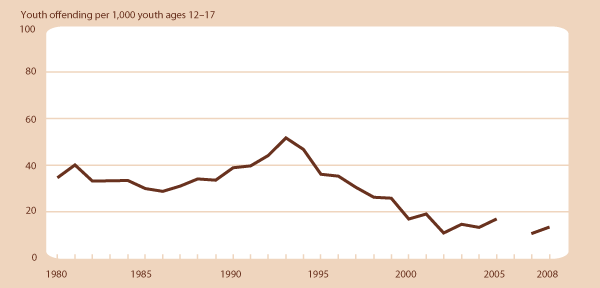
Design Collective Shackled Hands
I read an interesting blog post a couple of weeks ago called Hip Hop Goes to Prison. Basically the writer lists a number of high profile rappers and discusses the contact that they have had with the criminal legal system. He wrote this blog in response to what at the time was going to be the impending incarceration of rapper Lil Wayne.
Lil Wayne is currently serving a one year prison sentence at Rikers Island in New York. Lil Wayne born Dwayne Michael Carter just released his most successful album “Tha Carter III” in 2008. In March 2010, Lil Wayne began serving his prison sentence after being convicted of criminal possession of a weapon. This was not his first encounter with the criminal legal system. He had previously been arrested for use or possession of marijuana and other drugs.
Wayne is expected to be released from prison in November. He is 27 years old so he joins others in his demographic in serving time locked up. Young black men are the most likely to be incarcerated in America. It seems that even if you are a rich rapper, you cannot escape the clutches of the PIC.
However Wayne is so famous that The Week Magazine posted an article about his time in prison called “The Incarcerated Life of Lil Wayne." The article opens as follows:
Hip-hop superstar Lil Wayne — real name: Dwayne Carter — is currently serving time at New York’s infamous Rikers Island prison on drugs and weapons charges. But, based on media reports and the 27-year-old rapper’s own account of his life behind bars, life on the inside isn’t all bad for a pop culture icon.
I would like to emphasize the following part of the paragraph that I quote: “…life on the inside isn’t all bad for a pop culture icon.” Apparently, the general public is being led to believe that Rikers is just like summer camp for Wayne.
According to an article in the New York Daily News, Lil Wayne took to the internet to update his fans on life at Rikers Island. The article begins:
It doesn’t sound like Lil’ Wayne is doing hard time.
The rapper is giving fans a glimpse into his day-to-day life at Rikers Island – and the routine sounds like the average New Yorker’s lazy weekend, except that he can’t exactly leave for brunch.
“I wake up around 11 a.m. Have some coffee. Call my kids, and my wonderful mother. I then shower up. Read fan mail,” he wrote in a letter posted on weezythanxyou.com.
After that, the hip-hop star has lunch, gets back on the phone, reads a book or jots down his thoughts.
After dinner, he makes one more trip to the phone and does some pushups.
“Then I listen to ESPN on the radio. Read the Bible, then sleep. That’s my day,” he wrote.
This sounds like a veritable Club Med. I cannot stress how damaging these types of stories are to anti-prison activism and abolition efforts. Most of the public gets its information through the mainstream media and these types of accounts of prison life being positively leisurely reinforce the idea in the public imagination that prison is “no big deal.” In fact, it engenders public backlash where people say “see, prison is a country club” and therefore they support even more punitive policies. With all due respect, even if it is true that Wayne’s prison experience is a long vacation for him, the vast majority of other young black men in prison are NOT living such a life.
Making going to prison into a mundane routine also serves to desensitize young people of color to the violence and sheer dehumanization of the experience of incarceration. One can imagine a 13 year old black youth reading these accounts and getting a skewed and false impression of what prison is like. This type of “reporting” must be debunked and exposed as “bunk.”
Just for good measure, The Week Magazine’s article “The Incarcerated Life of Lil’ Wayne: By the Numbers” offers this “helpful” accounting for public consumption:
12
Duration, in months, of Lil Wayne’s prison sentence at Rikers Island for illegally possessing a handgun
.40
Caliber of the loaded semiautomatic pistol that Lil Wayne tried to hide in a Louis Vuitton knapsack when police entered his “pot smoke infused” tour bus in 2007
8
Number of months Wayne will actually serve, if he remains on good behavior
1
Minimum number of times Rikers guards have busted Lil Wayne for possession of “contraband,” including headphones and a charger for an Mp3 player
11 a.m.
Hour at which Lil Wayne wakes up each day. According to the rapper, his prison routine consists mostly of talking on the phone to his kids and “wonderful mother,” reading fan mail, doing “pushups,” listening to ESPN radio and reading the Bible
90
Length, in seconds, of the vocal solo Lil Wayne recorded over the phone, from jail, for Canadian rap artist Drake, one of his musical protegés
7,795,000
Approximate number of Facebook users who “like” Wayne’s personal website, Weezythanxyou.com. The site is regularly updated with letters the rapper sends from Rikers.
134
Number of fans Lil Wayne thanks, individually and by name, in his most recent letter
110
Number of days left in his jail stint, as of July 16
3
Number of years probation Lil Wayne must serve following his release from prison as a result of a separate 2008 bust, in which U.S. Border Patrol officers in Yuma, AZ, found drug paraphernalia, marijuana, cocaine, ecstasy and a registered handgun on his tour bus
$1.3 million
Sum concert production company RMF Productions sought to recoup from Wayne after he cancelled a series of concerts scheduled during his incarceration
7
Number of full-length studio albums Lil Wayne has released since his 1999 debut “Tha Bloc Is Hot”
1
Number of albums Wayne plans to release while he’s still in prison





